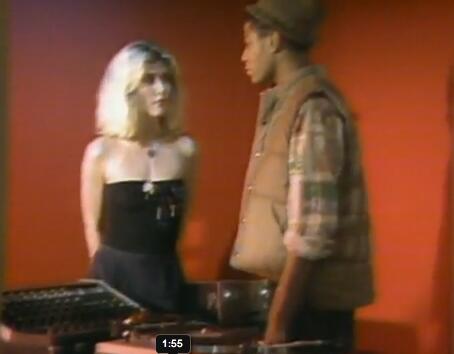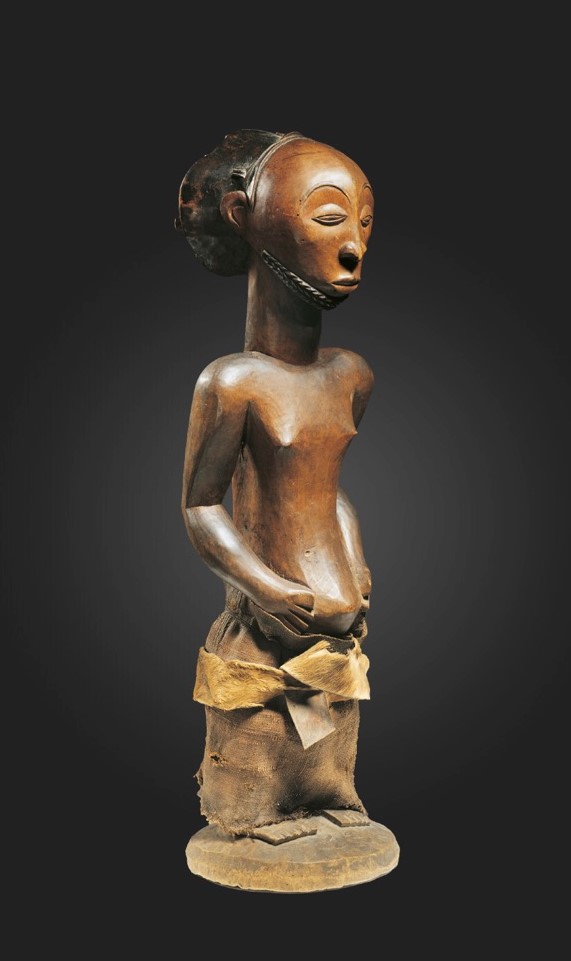- Facebook118
- Twitter1
- Total 119
When the 1980s began, I was a nerdy little white boy in middle school in the rapidly de-industrializing Rust Belt city of Syracuse, NY. When it ended, I was a grad. student in England, but I had lived in New Haven, London, Florence, and New York City. I was interested in classical music and the history of (European) philosophy and was pretty much the opposite of hip. However, I walked around with my eyes and ears open, and my friends were less nerdy than I. So I went in tow to venues like CBGB or Dingwalls. Much more often, I rode graffitied subway cars or watched breakdancers with boom boxes.
Two recent exhibitions have brought back the aesthetics of that period and helped me to understand it a bit better.

Mike Kelley and Jim Shaw were a decade older than me and from further north in the Rustbelt (Michigan), but I recognize the world they grew up in. They collected doodles drawn in ball-point pen on lined paper while the teacher wasn’t looking, fundamentalist tracts, album covers, semi-professional local ads, cable-access shows, comics, sci-fi paperbacks, D&D manuals, second-hand children’s book covers, toy packages from the dime store, pinups, and posters for high school plays. They imitated that material and mashed it together in their gallery art and for the stage performances of their punk band Destroy All Monsters.* I got to see samples of their work in “Michigan Stories: Mike Kelley and Jim Shaw” (MSU Broad Museum).
Born 6-8 years later than Shaw and Kelley, but famous when he was very young, Jean-Michel Basquiat mashed up Gray’s Anatomy (the book), old master paintings, documents from Black history, graphic symbols, sci-fi, jazz album covers, expressionist and pop art, found objects, and graffiti to make his groundbreaking work, which is featured in the Boston MFA’s Writing the Future: Basquiat and the Hip-Hop Generation.

Basquiat’s drawings and paintings are very striking, but it’s possible that the music videos steal the show. In Blondie’s Rapture (1981), which you can watch any time on YouTube, Basquiat is the DJ because Grandmaster Flash failed to show up for the filming. As Debbie Henry switches from punk to rap, she sings:
Fab Five Freddie told me everybody’s high
DJ’s spinnin’ are savin’ my mind
Flash is fast, Flash is cool
Francois sez fas, Flashe’ no do
That Haitian creole must be for Basquiat. Henry was the first person to purchase one of Basquiat’s works. It was news to me how closely punk and rap were intertwined.
Six years before this video, New York City had narrowly averted municipal bankruptcy. The subway had the highest crime rate of any mass transit system in the world and suffered from severe maintenance problems. A big part of the reason that graffiti artists could live in squats in lower Manhattan and paint whole trains was the economic crisis of the city. Meanwhile, the US auto industry that had sustained both urban Michigan and my Upstate New York hometown was shedding jobs. Between 1978 and 1982, 43% of automotive jobs (about half a million positions) were lost. No wonder Henry sings:
You go out at night, eatin’ cars
You eat Cadillacs, Lincolns too
Mercury’s and Subaru’s
And you don’t stop, you keep on eatin’ cars
“Rapture” was filmed in the deep recession year of 1981, when the Dow was down along with the rest of the economy. But as the decade progressed, markets rebounded and the culture celebrated finance—more, I would say, than industry or small business. It was the decade of Wall Street. And Wall Street’s Zuccotti Park is just 2.4 miles from Tomkins Square Park, the center of the bohemia portrayed in “Rapture.”
Basquiat’s art is explicitly anti-capitalist. I assume that artists who covered whole subway cars with their work considered the government that owned those trains as basically illegitimate and proposed a different form of ownership. Yet Basquiat started to make a lot of money in Manhattan gallery shows. Several of his close associates also moved from the economic margin to the center of the economic universe. For instance, in 1983, Basquiat and his girlfriend Madonna lived together in the Venice, CA studio of the art dealer Larry Gagosian (later known as “Go-Go” for his business acumen). Madonna was a legitimate member of the same bohemia as Basquiat, but she was on her way to selling 300 million records as the Material Girl. Even “Rapture,” which depicts a bunch of East Villagers who wouldn’t have a lot of money in their pockets, was beamed into millions of suburban rec. rooms through MTV.
Race was another dynamic. In places like Syracuse, Black/white racial integration reached its historic high. The school district implemented an ambitious desegregation plan. The ratio of African Americans to whites in the city’s population was also more balanced than it is in today’s “hyper-segregated” metro area. Syracuse has lost 35% of its population since 1950 in a process of suburbanization and re-segregation that was just getting started in the ’80s. Kelley and Shaw were white, and their musical genre was punk, but you can observe them admiring their Black counterparts from close up. Basquiat became famous in a predominantly white world but remained socially very close to Black and Caribbean New Yorkers. There was money to be made packaging rap for white teenagers, and money to be made subverting Reagan’s America in art or music.
A hostile critic would charge the ’80s bohemians with hypocrisy or even nihilism. (Those trains didn’t belong to them; most citizens preferred a subway without graffiti.) But I see pathos. This was revolutionary art without a revolution, an expression of left radicalism at a time when the deep cultural movement was rightward.
*this paragraph is self-plagiarized from Mike Kelley, Jim Shaw, and memories of Rust Belt adolescence.


